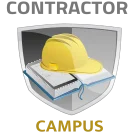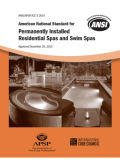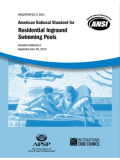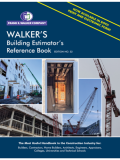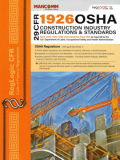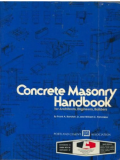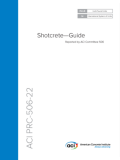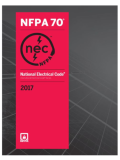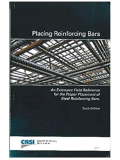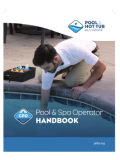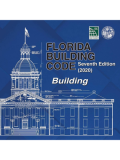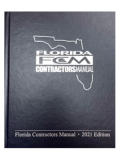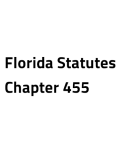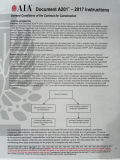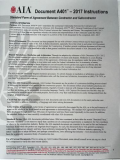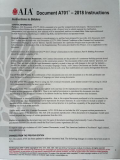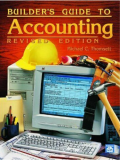Florida Residential Pool Contractor
Florida Residential Pool and Spa contractors can legally engage in contracting involving the following type of work:
- Construction, repair, and servicing of a residential swimming pool, or hot tub or spa (regardless of use)
- Replacement and installation of existing equipment
- Any cleaning or equipment sanitizing that requires at least a partial disassembly of equipment
- Installation of new pool/spa equipment
- Interior finishes
- Package pool heaters
- All perimeter piping and filter piping
- Construction of equipment rooms or housing for pool/spa equipment
- The residential pool scope of work includes the scope of work of a swimming pool/spa servicing contractor
- The following work is not included in the scope of the residential pool contractor
- Direct connections to a sanitary sewer system
- Potable water lines
- Equipment permanently attached to and associated with the pool or spa for the purpose of water treatment or cleaning of the pool or spa
If only interested in servicing and maintaining existing swimming pools and spas and are not interested in building them, then please visit Florida Service Pool/Spa Contractor License. If interested in building commercial swimming pools please visit Florida Commercial Pool and Spa Contractor's License.
How to Get a Residential Pool Contractor's License in Florida
- Be 18 years of age.
- Pass all parts of the exam(s) (within four years of the first attempt).
If an applicant has a Bachelor's degree in building construction or a related field, as well as a 3.0 GPA or higher, the applicant is only required to take the business exam. - Pay the fee for the Application.
- Complete the application form using the Online Services, or the Printable Application.
- Be of good moral character.
- Obtain worker's compensation and general liability coverage.
- Demonstrate financial responsibility by submitting a Credit Report:
- 660 FICO credit score or higher (applicant must submit a bond or irrevocable letter of credit if below 660 - FICO derived).
- If FICO score is less than 660, the applicant must take a 14-hour financial responsibility course.
- If applicable, provide proof of satisfaction of liens, judgments, and bankruptcy discharge.
- Background check with Electronic Fingerprints.
- Obtain public liability and property damage insurance.
- Obtain workers' compensation or exemption from workers compensation insurance within 30 days of issuance of their license.
- Satisfy one of the experience requirements set forth by the CILB:
- A combination of Experience and Education
- One year proved experience that applies to the category for which you are applying and a four-year construction-related degree from an accredited college (equivalent to 3 yrs. experience), or
- No less than three years of credits from accredited college-level courses, and One year of experience as a foreman, or
- Two years of credits from accredited college-level courses, one year experience as a foreman, and One year experience as a worker, or
- One year of experience as a foreman, one year of credits from accredited college-level courses, and two years of experience as a worker, or
- Four years of experience as a foreman or worker of which at least one year must have been as a foreman.
- The board expects the applicant to have experience in the following areas of the Residential Pool trade:
- Shell Placement
- Plumbing Components
- Deck work
- Electrical Components
- Tile, Coping, and Trim Work
- Excavation
- Grading
- Backfill
- Compacting
- Interior Surface Preparation and Finishing
- Military Service
Note: As part of the application applicant must submit the Fee Waiver and Military Service Verification for licensure- One year of experience as a foreman applicable to the category for which you are applying, and three years of military service.
- One year of experience as a worker or foreman applicable to the category for which you are applying, one year of experience as a foreman, and two years of military service.
- Two years of experience as a worker or foreman applicable to the category for which you are applying, and one year of military service.
- A combination of Experience and Education
- Pass the Residential Pool and Business & Finance exams.(sign up for the exams)
- Submit the complete Residential Pool application form to:
Department of Business and Professional Regulation
2601 Blair Stone Road
Tallahassee, FL 32399-0783
Florida Residential Pool & Spa Contractor Exams
Florida Residential Pool Contractor License Exam
- Testing Method: Computer-based testing
- Testing Company: Pearson Vue©
- Number of Questions: 80
- Types of Questions: Multiple Choice
- Time Allowed: 300 Minutes
- Minimum Passing Score: 70%
- Subjects Involved:
Pre-Installation and Site Preparation (7.5%)
- Drawing plans that meet job requirements
- Local ordinances and setback requirements
- Survey restrictions
- Environmental requirements
- ANSI 5 design criteria
- ANSI 3 design criteria
- System design
- Symbols
- Abbreviations
- Terminology
- Site dimensions
- Scale dimensions
- Soil types
- Determine appropriate equipment needed for jobs
- Florida Building Code and any local amendments
- Site conditions
- Availability of utilities
- Subsoil conditions
- Water tables
- Characteristics of gunite, tile, steel, fiberglass, vinyl, concrete piping, and wiring
- Complying with building department requirements
- Permitting requirements
- Required inspections
- Life safety issues
- Drawing plans that meet job requirements
Pool and Spa Excavation (15%)
- Locating underground, above ground and overhead obstructions
- Where to find information
- Site conditions
- How to identify obstructions
- When and how to notify appropriate authorities
- Permissible working conditions
- Excavating or clearing sites
- Staking out excavation
- Determining location of excavation
- Shoring
- Soil conditions
- Invert elevations
- Basic surveying
- Layout methods
- Interpreting plans and specifications
- Surveying and leveling equipment
- Compaction equipment
- Earth moving and excavation equipment
- Performing site grading
- Elevation requirements
- Basic surveying and leveling techniques
- Surveying and leveling equipment
- Identification of obstructions
- Removal of site debris
- Drainage
- Determining water tables
- Subsoil conditions
- Augers
- Aquifers
- Drilling equipment and practices
- Determining soil conditions
- Subsoil conditions
- Excavation
- Sampling
- Soil composition
- Soil testing
- Performing de-watering, de-mucking and well-pointing
- Dewatering equipment
- Piping requirements
- Soils
- Soil permeability
- Excavation equipment
- Excavating techniques and requirements
- Water table
- Well points
- Drawdown
- Pump requirements and techniques
- Backfilling and compacting
- Different types of backfill material
- Surveying and leveling equipment
- Surveying and leveling techniques
- Soil properties
- Compaction methods
- Correct moisture content
- Percent compaction
- Soil density testing techniques
- Amount of dirt to fill
- Removing foreign materials and debris
- Hand tools
- Excavation equipment
- Hauling equipment
- Materials disposal requirements
- Environmental standards protection
- Locating underground, above ground and overhead obstructions
Plumbing Work (12.5%)
- Installing recirculating lines
- Interpreting plans and specifications
- Piping materials and applications
- Placement
- Associated fittings
- Valve requirements
- Related components
- Pressure testing recirculating lines
- Theory
- Psi
- Hook-up and placement ability to understand test results
- Dangers of pressure plugs
- Open trench inspections
- Pressure testing techniques
- Dangers of pressurized lines
- Installing filter equipment
- Filtration requirements
- Manufacturer’s specifications
- Type of filters
- Gauges and valves
- Placement of pumps
- Types and capacities of motors
- Flow rates and piping pressures
- ANSI 7 requirements
- Inlets and outlets
- Installing pumps
- Filtration requirements
- Types of pumps and pump loads
- Grounding
- Piping techniques and requirements
- Pressures and flow requirements
- Manufacturer’s specifications
- Hydraulics
- Installing skimmers
- Filtration requirements
- Types of skimmers
- Skimmer housings
- Strainer baskets
- Weirs and valves
- Vacuum cleaning connections
- Flow rates, pressures, and overflow systems
- Installing solar heaters
- Solar heating requirements and practices
- Solar collectors
- Piping techniques and requirements
- Pipe fittings
- Control requirements
- Pump requirements
- Installing conventional heaters (gas, heat pump, electric)
- State and local codes
- Location requirements
- Fire and gas codes
- Sizing and flow rates
- Heat exchangers for gas heaters
- Location of L.P. Gas tanks for gas heaters
- Heat pumps for electric heaters
- Immersion elements for electric heaters
- Manufacturer’s specifications
- Installing automatic cleaners
- Piping requirements
- Pipe fitting
- Fittings
- Pumps
- Filtration requirements
- Materials
- Processes for automatic feeders
- Installing automatic feeders
- Piping techniques and requirements
- Pipe fitting requirements
- Pipe fitting
- Pipe materials
- Processes for automatic feeders
- Manufacturer’s specifications
- Sizing pipes
- Hydraulics
- ANSI 7 requirements
- Pump specifications
- Pump flow rates
- Installing recirculating lines
Electrical Work (5%)
- Determining power line requirements
- Wire size based on amperage
- Size of conduits
- Types of conduits
- Wire type
- Overhead power
- CALL BEFORE YOU DIG
- Determining line sizes
- Installing electric control panels
- Safety requirements
- Location and clearance requirements
- Electrical grounding requirements
- Sizing breakers
- Perform bonding procedures
- Safety requirements
- Bonding requirements
- NEC requirements
- Perform grounding procedures
- Safety requirements
- Electrical grounding requirements
- NEC requirements
- Installing light niches
- Proper installation requirements (conduit)
- Safety requirements
- Types of niches
- Location and amount of illumination
- Bonding requirements
- Manufacturer’s specifications
- Elevation and placement of niche
- Voltage limitations
- Installing, replacing and repairing electrical components
- Local and state codes
- Automatic timers
- Lights
- Electrical connections to chlorinating generators
- Manufacturer’s specifications
- Scope of work
- Determining power line requirements
Shell Placement (10%)
- Installing steel reinforcing bars
- Reinforcing practices and procedures
- Scale dimensions
- Measurement requirements
- Bonding requirements
- Concrete coverage and rebar clearances
- Installing fiberglass walls
- Material properties
- Specific handling requirements
- Supports and anchorage
- Backfilling requirements
- Surveying and leveling equipment
- Surveying and leveling techniques
- Soil properties and angle of repose
- Excavation techniques
- Manufacturer’s specifications
- Installing metal walls
- Material properties
- Specific handling requirements
- Supports and anchorage
- Backfilling requirements
- Surveying and leveling equipment
- Surveying and leveling techniques
- Soil properties and angle of repose
- Excavation techniques
- Manufacturer’s specifications
- Installing plastic walls
- Material properties
- Specific handling requirements
- Supports and anchorage
- Backfilling requirements
- Surveying and leveling equipment
- Surveying and leveling techniques
- Soil properties and angle of repose
- Excavation techniques
- Manufacturer’s specifications
- Installing structural polymer walls
- Material properties
- Specific handling requirements
- Supports and anchorage
- Backfilling requirements
- Surveying and leveling equipment
- Surveying and leveling techniques
- Soil properties and angle of repose
- Excavation techniques
- Manufacturer’s specifications
- Testing for leakage in pool and spa shells
- Measuring elevation differentials
- Evaporation
- Testing procedures
- Rate of loss procedures
- Mixing pneumatically applied concrete
- Concrete reinforcement requirements
- Concrete properties
- Concrete testing
- Placement techniques
- Finishing techniques
- Pressurized concrete equipment
- Installing precast support pilings
- Soils
- Precast piles
- Pile driving methods and procedures
- Engineer’s specifications
- Installing steel reinforcing bars
Deck Work (5%)
- Laying out and forming decks
- Surveying and leveling equipment
- Surveying and leveling techniques
- Excavation and backfill
- Drainage requirements
- Form work
- Safety requirements
- Compaction requirements
- Installing wood decks
- Pressure treated wood
- Other wood protection
- Carpentry
- Carpentry tools
- Foundations
- Piers
- Connectors
- Safety requirements
- Installing concrete decks
- Concrete properties
- Concrete reinforcement
- Concrete placement
- Concrete finishing
- Form work
- Expansion and contraction protection
- Drainage and slope
- Deck drains and plumbing
- Deck finishes
- Compaction requirements
- Soil treatments
- Installing masonry type decks (tile, stone, and brick)
- Sub-base materials
- Work requirements
- Material placement
- Drainage and slope
- Deck drains
- Stabilization
- Compaction
- Laying out and forming decks
Tile, Coping and Trim Work (10%)
- Installing tiles
- Material properties
- Specific handling requirements
- Measurements
- Measuring equipment
- Types of grouts and requirements
- Adhesive requirements
- Mortar requirements
- Cleaning
- Leveling techniques and requirements
- Architectural effects
- Manufacturer’s specifications
- Control joints
- Code requirements
- Plans and specifications
- Installing masonry trims (brick, stone, and precast coping)
- Material properties
- Specific handling requirements
- Measurements
- Measuring equipment
- Types of grouts and requirements
- Adhesive requirements
- Mortar requirements
- Cleaning
- Leveling techniques and requirements
- Architectural effects
- Mitering
- Manufacturer’s specifications
- Control joints
- Code requirements
- Plans and specifications
- Checking for level placement of materials
- Leveling equipment
- Leveling techniques and requirements
- Code requirements
- Plans and specifications
- Installing tiles
Accessory Work (5%)
- Installing fencing
- State and local codes
- Location requirements
- Picket spacing
- Safety requirements
- Barrier code and insurance requirements
- Installing diving boards and diving platforms
- Materials for diving boards
- Installation requirements
- Safety requirements
- Proper placement
- Manufacturer’s specifications
- Bonding requirements
- Installing slides
- Materials for slides
- Installation requirements
- Proper placement
- Safety requirements
- Manufacturer’s specifications
- Bonding requirements
- Installing auxiliary lighting
- Fiber optic lighting
- Low voltage accent lighting
- Manufacturer’s specifications
- Proximity location
- NEC requirements
- Installing alternate sanitation devices
- Different types of devices
- Manufacturer’s specifications
- Installation
- Different device applications
- Scope of work
- Installing fencing
Interior Surface Preparation and Finishing (5%)
- Performing interior pool and spa clean-ups
- Pool draining procedures
- Possible uplift
- Chemicals
- Cleaning solutions
- Cleaning procedures
- Safety requirements
- Disposal requirements
- Surface adhesion
- Performing interior pool and spa finishes of concrete pools
- Concrete requirements
- Concrete testing
- Concrete properties
- Finishing and brazing
- Surface adhesion
- Installing lining in vinyl-lined pools
- Materials
- Methods
- Soils
- Retaining walls
- Coping
- Leveling and installing
- Anchoring
- Manufacturer’s specifications
- Performing interior pool and spa clean-ups
Start Up (5%)
- Pre-testing fill water
- Water chemistry
- Testing procedures and requirements
- Reagents
- Saturation
- pH
- Total alkalinity
- Hardness
- Prefiltering procedures
- TDS levels
- Testing filters and filtration
- Pressurizing procedures and requirements
- Turnover rates
- Pumps
- Testing procedures
- Manufacturer’s specifications
- Balancing pool water
- Water chemistry
- Testing procedures and requirements
- Solutions
- Reagents
- Saturation
- pH
- Total alkalinity
- Hardness
- Disinfecting
- Sanitizing
- Safety requirements
- Chemical dangers
- Algae identification
- Starting pool and spa auxiliary equipment
- Manufacturer’s specifications
- System design
- System calibration
- Turnover rate
- Testing heating equipment
- Wiring
- Fuels
- Solar input
- Testing procedures
- Temperature measurement
- System design
- Exhaust venting
- Manufacturer’s specification
- Types of heaters
- Testing pump
- Testing procedures
- Pump requirements
- System design
- Hydraulics
- Performing finalpool and spa clean-ups
- Material procedures
- Safety requirements
- Pre-testing fill water
Service and Maintenance (10%)
- Demonstrating pool operation to owners
- Mechanical and hydraulic systems
- Chemical systems
- General pool care requirements
- Communicating safety requirements
- Equipment
- Communication skills
- Daily reports
- Maintenance procedures
- Sanitizing pools and spas through chlorination
- Water chemistry
- pH
- Pool chemicals
- Effects of pool chemicals
- Practices of pool chemicals Safety requirements
- Dangers of chlorinating agents
- Chlorinating requirements
- Chlorinating procedures
- Chemical balancing techniques and requirements
- Testing techniques and requirements
- Reagents
- Adjusting techniques and requirements
- Performing shock treatments or superchlorinations
- Water chemistry
- pH
- Pool chemicals
- Effects of pool chemicals
- Safety requirements
- Dangers of chlorinating agents
- Chlorinating requirements
- Chlorinating procedures and techniques
- Chemical balancing
- Testing techniques and requirements
- Reagents
- Adjusting techniques and requirements
- Identifying chemical demand
- Algae identification
- Determining breakpoint chlorinations
- pH
- Pool chemicals
- Effects of pool chemicals
- Practices of pool chemicals
- Safety requirements
- Dangers of chlorinating agents
- Chlorinating requirements
- Chlorinating procedures
- Chemical balancing techniques and requirements
- Testing techniques and requirements
- Reagents
- Adjusting techniques and requirements
- Sanitizing pools and spas through oxidation
- Effects of pool chemicals
- Practices of pool chemicals
- Safety requirements
- Chemical balancing techniques and requirements
- Testing techniques and requirements
- Reagents
- Adjusting techniques and requirements
- Checking accurate turbidity
- Testing techniques and requirements
- Reagents
- Adjusting techniques and requirements
- Testing and adjusting pH values
- Water chemistry
- pH
- Pool chemicals
- Effects of pool chemicals
- Safety requirements
- Dangers of chlorinating agents
- Chlorinating requirements
- Chlorinating procedures
- Chemical balancing techniques and requirements
- Testing techniques and requirements
- Reagents
- Adjusting techniques and requirements
- Testing and adjusting water hardness
- Water chemistry
- pH
- Pool chemicals
- Effects of pool chemicals
- Practices of pool chemicals
- Safety requirements
- Dangers of chlorinating agents
- Chlorinating requirements
- Chlorinating procedures
- Chemical balancing techniques and requirements
- Testing techniques and requirements
- Reagents
- Adjusting techniques and requirements
- Calcium hardness
- Testing and adjusting total alkalinity
- Water chemistry
- pH
- Pool chemicals
- Effects of pool chemicals
- Safety requirements
- Dangers of chlorinating agents
- Chlorinating requirements
- Chlorinating procedures
- Chemical balancing techniques and requirements
- Testing techniques and requirements
- Reagents
- Adjusting techniques and requirements
- Testing and adjusting cyanuric acid
- Water chemistry
- pH
- Pool chemicals
- Effects of pool chemicals
- Safety requirements
- Dangers of chlorinating agents
- Chlorinating requirements
- Chlorinating procedures
- Chemical balancing techniques and requirements
- Testing techniques and requirements
- Reagents
- Adjusting techniques and requirements
- Effects of cyanuric acid
- Utilizing pool blankets and covers
- Materials and types
- Properties of materials
- Safety requirements
- Installation
- Securing installation
- Chemical balance effects
- Testing and adjusting metals
- Water chemistry
- Pool chemicals
- Effects of pool chemicals
- Safety requirements
- Dangers of chlorinating agents
- Chlorinating procedures
- Chemical balancing techniques and requirements
- Testing techniques and requirements
- Reagents
- Adjusting techniques and requirements
- Sequestering agents
- Cleaning D.E. filters by backwashing and jet spraying
- System design
- Pump requirements
- Flow rates
- Safety requirements
- Testing procedures
- Water clarity
- Gauges
- Drainage
- Valves
- Filter media disposal
- Backwashing sand filters
- System design
- Pump requirements
- Flow rates
- Safety requirements
- Testing procedures
- Water clarity
- Gauges
- Drainage
- Valves
- Manufacturer’s specifications
- Using sodium hypochlorite for disinfecting and deck cleaning
- Safety requirements
- Chemical properties
- Mixing procedures
- Chemical effects
- Chemical balancing techniques and requirements
- Storage procedures and requirements
- Using calcium hypochlorite to sanitize decks and locker rooms
- Safety requirements
- Chemicals
- Chemical properties
- Mixing procedures
- Chemical effects
- Chemical balancing techniques and requirements
- Storage procedures and requirements
- Using other pool sanitizers (e.g., bromine, iodine, ozone, ultraviolet, silver and electrolytic cells)
- Safety requirements
- Chemicals
- Chemical properties
- Mixing procedures
- Chemical effects
- Chemical balancing techniques and requirements
- Chemical storage procedures and requirements
- Chemical application procedures and requirements
- Using other pool chemicals (e.g., flocculents, algicides, sequestering agents, degreasers and defoamers)
- Safety requirements
- Chemicals
- Chemical properties
- Mixing procedures
- Filtration requirements
- Filtration media
- Chemical effects
- Chemical balancing techniques and requirements
- Chemical storage procedures and requirements
- Testing and adjusting water saturation and undersaturation
- Water chemistry
- pH
- Pool chemicals
- Effects of pool chemicals
- Safety requirements
- Chlorinating techniques and procedures
- Chemical balancing techniques and requirements
- Testing procedures
- Reagents
- Adjusting procedures
- Langlier Index
- Identify the effect of chemical balances on staining
- Safety requirements
- Chemicals
- Chemical properties
- Mixing procedures
- Chemical effects
- Storage procedures and requirements
- Replacing light bulbs and underwater lights
- Different voltage lights
- Proper safety procedures and requirements
- Importance of ground fault interrupter
- Safe wiring and sealing water out
- Material specifications
- Bonding and grounding requirements
- Manufacturer’s specifications
- Utilizing pool blankets and covers
- Materials and types
- Positives and negatives of pool blankets and covers
- Properties of materials
- Safety requirements
- Installation
- Securing installation
- Chemical balance effects
- Maintaining and repairing plumbing equipment
- Safety requirements
- Piping requirements
- Fittings
- Pipe Fittings
- Piping protection
- Pressure requirements
- Pauges
- Pressure testing
- Flow rates
- Pumps
- Leak detection
- Maintaining and repairing decks
- Bonding agents for adhesion of new material to old
- Cleaning in preparation for repair
- Safety requirements
- Expansion joints
- Codes
- Maintaining strength of the deck
- Soil conditions
- Compaction
- Concrete placement
- Maintaining and repairing accessory fixtures
- Safety requirements
- Solar heating
- Conventional heating
- Materials
- Properties of materials
- Procedures
- Material handling
- Manufacturer’s specifications
- Maintaining and repairing pool shells
- Leak detection
- Leak testing
- Safety requirements
- Materials
- Properties of materials
- Crack repair procedures
- Recoating procedures
- Cleaning cartridge filters
- System design
- Pump requirements
- Flow rates
- Safety requirements
- Testing procedures
- Water clarity
- Gauges
- Drainage
- Valves
- Manufacturer’s specifications
- Performing heater care and maintenance
- Safety requirements
- Testing procedures and requirements
- System design
- System capacity
- Temperature measurements
- Effects of temperature
- Changes in temperature
- Effects of water chemistry on heater components
- Pool chemistry
- Gas and electric requirements
- Flow rates
- Demonstrating pool operation to owners
Equipment (10%)
- Using jackhammers
- Safety requirements
- OSHA requirements
- Equipment characteristics
- Using saw cutting machines
- Safety requirements
- OSHA requirements
- Equipment characteristics
- Using bobcats or backhoes
- Safety requirements
- OSHA requirements
- Equipment characteristics
- Traffic regulations
- Using compressors
- Safety requirements
- OSHA requirements
- Pressure regulators
- Air tools
- Using concrete pumps
- Safety requirements
- OSHA requirements
- Concrete properties
- Concrete procedures
- Concrete testing
- Concrete placement
- Using jackhammers
- Official list of subjects for the Residential Pool contractor exam
Florida Residential Pool Business and Finance Exam
- Testing Method: Computer-based testing
- Testing Company: Pearson Vue©
- Number of Questions: 120
- Types of Questions: Multiple Choice
- Time Allowed: 390 Minutes
- Minimum Passing Score: 70%
- Subjects Involved:
Establishing the Contracting Business (11%)
- Determining the Business Organizational Structure
- Business structure laws and regulations
- Fiduciary responsibilities of officers and directors
- Open vs. closed corporations
- Organizational charts and chain of responsibilities
- State and local licensure requirements
- Tax advantages and/or liabilities for various business structures
- Develop the Business Plan
- Accounting practices
- Local marketplace
- Scope of contractor license
- Establish Relationships with Other Professionals
- Accountant specialization
- Attorney specialization
- Insurance types and limitations
- Underwriting requirements for bonding
- Acquire Fixed Assets
- Advantages/disadvantages of business location
- Advantages/disadvantages of lease vs. purchase
- Obtain Insurance
- knowledge of accounting practices
- Advantages/disadvantages of various types of insurance
- Coverages and limitations of insurance
- Determining the Business Organizational Structure
Managing Administrative Duties (26%)
- Develop the Business
- Availability of staffing for business operation
- Income sources
- Markets and market share.
- Determine Outsourced Services
- Determine Business Overhead
- FICA
- Advertising costs (business cards, dues, printing, etc.)
- Communication costs (cell phones, land lines, etc.)
- Cost of sales (travel expenses)
- Federal unemployment (FUTA)
- General liability rates
- Lease expenses
- Loan financing expenses (interest, etc.)
- Medicare rates
- Rent costs
- State unemployment (SUTA)
- Utility costs
- Worker’s compensation
- Preparing Bids/Proposals
- Accounting principles
- AIA documents
- Business projections/goals current status
- Company overhead
- Contract documents
- Contract law
- Cost of financing projects
- Costs associated with growth
- General conditions costs of projects
- How to review contracts
- How to write offer
- Insurances associated with labor rates
- Labor productivity
- Statute of frauds
- Taxes associated with labor rates
- Components of valid contract
- Purchase Materials/Supplies
- Depreciative costs
- Fundamentals of Uniform Commercial Code
- Inventory system operation (FIFO, etc.)
- Invoice approval systems
- Negotiating skills
- Purchasing systems
- Receiving systems
- State sales tax laws
- Statute of frauds
- Vendors in area
- Prepare Invoices/Draw Requests
- Basic math skills
- Calculation of percentage of work completed
- Contract/subcontract documents
- How to prepare invoices/draw requests
- Lien laws
- Develop a Safety Program
- Drug testing regulations
- MSDS sheets
- OSHA regulations
- Maintain Insurance
- General terms and definitions used in policies
- Insurance policies
- Limits of insurance
- Various types of insurance
- Various types of risk
- Managing Contracts
- Contract law
- Contract scope
- Job completion schedules
- Lien laws
- Mediation and arbitration processes
- Local building code requirements
- Tort law
- Risk management
- Develop the Business
Managing Trade Operations (10%)
- Schedule Trade Operations
- Critical path method (CPM)
- Delivery times
- Manufacturing times
- Requests for information (RFI)
- Sequencing trades
- Submittals/approval/fabrication process
- Maintain OSHA/Safety Records
- Document/record retainage requirements
- Penalties for non-compliance with OSHA
- Purchase/Order Materials & Supplies
- Accounting skills
- Basic math skills
- Job schedules
- Negotiation skills
- Organizational skills
- Plan reading skills
- Quality control
- Quantity take-offs
- Terms and abbreviations on invoices
- Types of building materials
- Leasing/Purchasing Equipment
- Cost of operation of equipment
- Depreciation
- Equipment operation
- Forecasted use of purchased equipment
- Interest costs for financing
- Maintenance
- Salvage resale values
- Support equipment required for equipment
- Tax credits associated with purchases
- Training needs for equipment
- Transportation costs for equipment
- Manage Material/Tool/Equipment Inventory
- Equipment maintenance procedures
- Inventory methods
- Schedule Trade Operations
Conducting Accounting Functions (32%)
- Manage Accounts Receivable
- Accounting principles
- Basic math skills
- Computer skills
- Lien laws
- Manage Accounts Payable
- Accounting principles
- Basic math skills
- Computer skills
- How to calculate discounts
- Lien laws
- Manage Cash Flow
- Accounting
- Banking
- Basic math skills
- Financial ratios
- File Tax Forms & Returns
- Accounting principles
- Basic math
- Federal tax laws
- Property tax laws
- Record keeping requirements
- Sales tax laws
- State tax laws
- Track Job Costs
- Accounting principles
- Basic math
- Calculate Employee Payroll
- Accounting
- State & federal tax laws
- Basic math
- Employment laws
- Employment/labor laws
- Hierarchy of garnishments
- Manage Accounts Receivable
Managing Human Resources (6%)
- Hire New Employees
- Employment laws
- Discrimination laws
- Interviewing skills
- Required forms for new hires
- Background checks
- Develop Human Resource Policies & Procedures
- Employment/labor laws
- OSHA
- Chain of custody (drug tests)
- Insurance regulations
- Evaluate Employees
- Employment/labor laws
- Hire New Employees
Complying with Government Regulation (15%)
- Comply with Federal Laws & Regulations
- FEMA (immigration components)
- OSHA
- Tax laws
- National Pollution Discharge
- Elimination System (NPDES)
- Environmental laws
- Comply with State Laws& Regulations
- Chapter 455 F.S.(Business & Professional Regulation)
- Chapter 713 F.S. (Liens)
- 61G4 F.A.C.
- Worker’s Compensation
- Laws/DOR Sales/Use Tax
- Chapter 489, Part 1 F.S (Construction Contracting)
- Required continuing education
- CEU credit records
- License holder responsibilities
- Comply with Federal Laws & Regulations
- Official list of subjects for the Business and Finance exam
Florida Residential Pool & Spa Contractor Classes
You can sign up for your classes at any time and receive access to lecture videos, practice questions, tabbing and highlighting instructions, as well as to step-by-step explanations on how to solve typical Residential Pool and Spa Contractor Exam Problems. The Residential Pool and Spa Contractor Classes prepare you for the trade and business exams. You can also attend live online classes as needed. All live refresher online classes are on Saturdays from 8:30 AM - 4:30 PM (ET). Florida Residential Pool Contractor Testing Schedule. You must pass all exams before applying for the Residential Pool Contractor’s License in Florida. To sign up for the Florida Residential Pool Contractor classes, simply click on the "enroll" button below and checkout; this will allow you to receive immediate access to the online Florida Residential Pool Contractor Classes. All students have access for an unlimited amount of time (until passing all the Florida Residential Pool Contractor exams needed to get the Residential Pool license!). For a list of upcoming classes for the Florida Residential Pool Contractor Exams click on the link within the course description below.
Florida Residential Pool Contractor Books
The set of books includes all required references for both the Residential Pool and Business and Finance exams. Orders placed before 2 PM are shipped the same day via UPS and a tracking number is emailed before 3 PM.
FLORIDA RESIDENTIAL POOL - BOOK SET WITHOUT TABS INCLUDES ALL BOOKS FOR TRADE AND BUSINESS EXAMS
FLORIDA RESIDENTIAL POOL - BOOK SET WITH TABS INCLUDES ALL BOOKS FOR TRADE AND BUSINESS EXAMS
List of Books for the Residential Pool Contractor Trade Exams
-
ANSI NSPI-3 Standard for Permanently Installe...Standard for Permanently Installed Residentia
r31 1$130.63$130.63 -
This standard applies to permanently-installe...Standard for Residential Inground Swimming Po
r32 1$133.03$133.03 -
The Building Estimator's Reference Book is an...Building Estimators Reference Book
r69 1$144.42$144.42 -
OSHA (CFR 29 Part 1926) is the leading safety...CFR (OSHA) Title 29 Part 1926 (1903 1904 1910
r84 1$30.00$30.00 -
This reference is only sold by publisher. Thi...Concrete Masonry Handbook for Architects Engi
r96 1Sales price: $0.00Sales price: $0.00 -
Guide to Shotcrete (ACI 506R) provides inform...Guide to Shotcrete ACI 506R
r152 1$154.65$154.65 -
The 2017 National Electrical Code is used as ...NFPA 70 National Electrical Code 2017
r224 1$180.31$180.31 -
Placing Reinforcing Bars covers all aspects o...Placing Reinforcing Bars
r249 1$107.78$107.78 -
Pool & Spa Operator's Handbook is the book us...Pool & Spa Operator Handbook
r255 1$69.42$69.42 -
Florida Building Code 2020 edition is the pri...Florida Building Code - Building
r127 1$219.44$219.44
List of Books for the Business and Finance Exam
-
The Florida Contractor's Manual is used as on...Florida Contractors Manual
r138 1$181.23$181.23 -
Chapter 455 of the Florida Statutes (Business...Florida Statutes Chapter 455
r462 1$33.61$33.61 -
The A201 is published by the AIA and establis...A201 General Conditions of the Contract for C
r5 1$83.78$83.78 -
Please beware of companies selling photocopie...A401 Standard Form of Agreement between Contr
r6 1$83.78$83.78 -
Please beware of companies selling photocopie...A701 Instructions for Bidders
r7 1$58.41$58.41 -
Builder's Guide to Accounting, is used for th...Builders Guide to Accounting
r67 1$46.28$46.28
